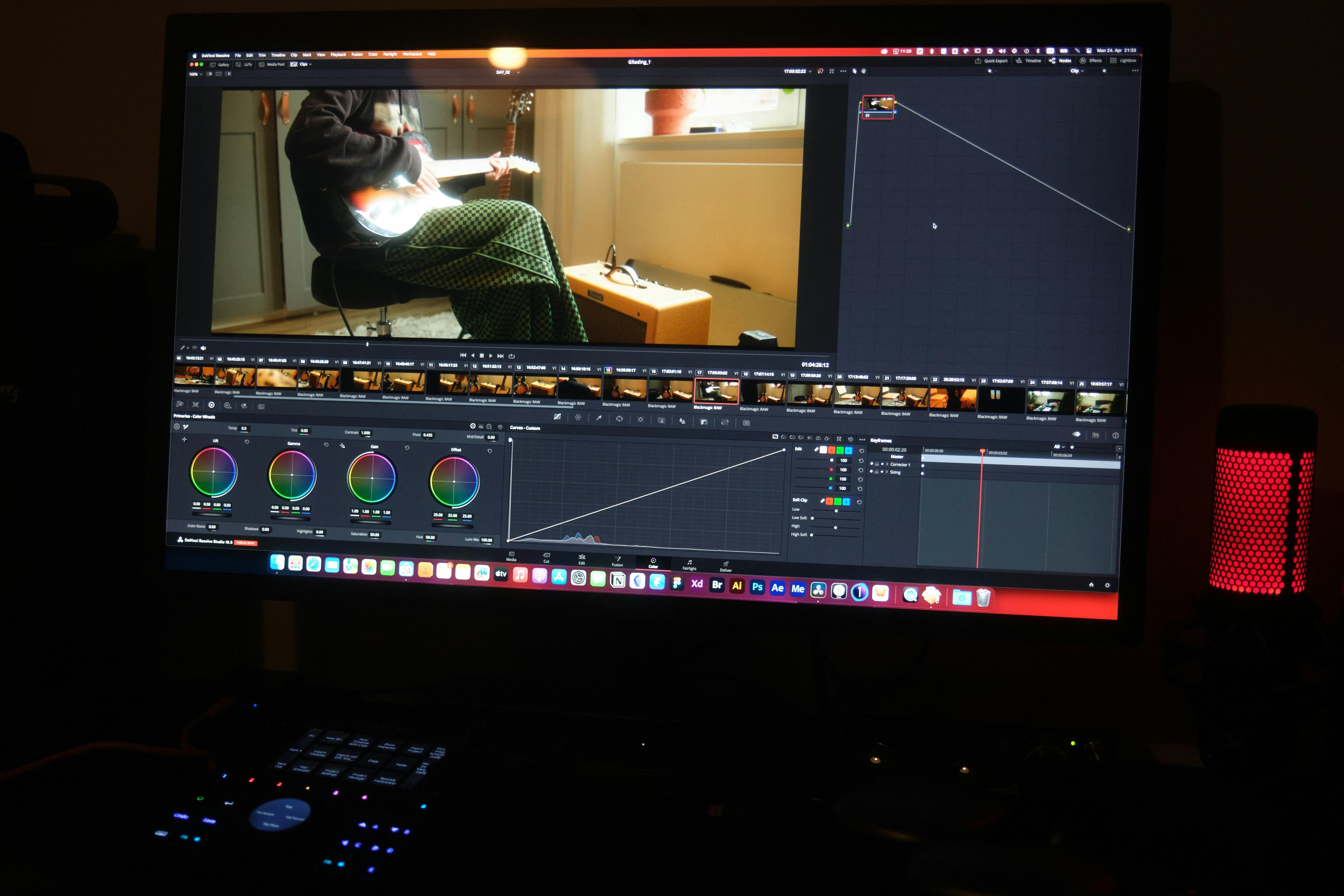In the dim glow of a theater, as scenes flicker across the screen, audiences are swept into worlds where emotions are not just felt but vividly seen. At the heart of this sensory journey lies an unsung hero: color grading. More than a mere aesthetic choice, color grading weaves a tapestry of hues that can evoke nostalgia, tension, or serenity. It transforms the ordinary into the extraordinary, guiding viewers’ emotions and enhancing storytelling with every shade and tint. This article delves into the intricate art of color grading, exploring how it breathes emotional depth into films, crafting experiences that linger long after the credits roll.
Crafting Mood: The Emotional Palette of Cinema
In the world of cinema, color grading acts as the unseen hand that guides the viewer’s emotions, painting each frame with a deliberate palette that evokes specific feelings. Through the meticulous adjustment of hues, saturation, and contrast, filmmakers can transform the mundane into the extraordinary, creating a visual symphony that resonates with the audience. Consider the soft, desaturated tones of a nostalgic drama, where memories are tinged with a gentle sepia, inviting the viewer into a realm of reflection and longing. Conversely, the vibrant, oversaturated colors of an action-packed blockbuster amplify the adrenaline, drawing us into a world where every moment is larger than life.
The emotional impact of color grading is further enhanced through careful attention to detail. Filmmakers often employ specific color schemes to symbolize underlying themes and character arcs. Some common approaches include:
- Warm Tones: Often used to convey warmth, passion, or intimacy, these colors can create a sense of comfort or heightened emotion.
- Cool Tones: Blues and greens may evoke calmness, detachment, or melancholy, setting a somber or introspective mood.
- Monochrome: Stripping color can emphasize starkness or timelessness, focusing the viewer’s attention on texture and form.
The careful balance of these elements forms the emotional backbone of a film, allowing the audience to connect with the narrative on a deeper level.

Subtle Hues: How Color Grading Shapes Narrative Tone
In the realm of storytelling, the power of color grading extends beyond mere aesthetic appeal, serving as a subtle yet potent tool to sculpt the narrative’s emotional landscape. Through the delicate manipulation of hues, filmmakers can convey complex emotions and set the underlying tone of a scene, often without a single word being spoken. For instance, cool tones like blues and grays can evoke feelings of isolation or melancholy, while warm tones such as reds and oranges can ignite a sense of passion or urgency. The careful balance of these colors can guide the audience’s subconscious, gently steering their emotional responses and heightening their connection to the story.
- Muted palettes often suggest introspection or nostalgia, wrapping the narrative in a veil of subtlety and depth.
- Vibrant colors can create a sense of fantasy or exaggeration, amplifying the story’s more dramatic elements.
- Monochromatic schemes may be employed to unify a narrative theme or to underscore a character’s singular focus.
By thoughtfully applying these techniques, filmmakers transform color grading into a silent narrator, enriching the storytelling experience and imbuing each frame with layers of meaning. It’s this intricate dance of light and shade that often leaves a lasting imprint on the viewer’s psyche, making color grading an indispensable facet of cinematic artistry.

Beyond the Surface: Emotional Resonance Through Color Techniques
Color grading is more than just an aesthetic choice in filmmaking; it’s a powerful tool that taps into the viewer’s subconscious to evoke specific emotions. By manipulating hues, saturation, and contrast, filmmakers craft a visual language that resonates deeply with the audience. Warm tones, such as reds and oranges, often suggest passion, intimacy, or tension, while cool tones like blues and greens can evoke feelings of calm, detachment, or melancholy.
- Desaturation: Creates a sense of realism or bleakness, often used in dystopian or dramatic narratives.
- High Contrast: Enhances drama and urgency, frequently found in action sequences or thrillers.
- Monochromatic Schemes: Focuses attention and underscores thematic elements, prevalent in artistic or introspective films.
Through these deliberate choices, color grading becomes a silent storyteller, guiding the emotional journey of the film and creating an immersive experience that lingers beyond the screen.

Practical Tips: Enhancing Storytelling with Color Grading
Color grading is a subtle yet powerful tool that can elevate storytelling by enhancing the emotional resonance of a film. To effectively use color grading, consider these practical tips:
- Establish a Color Palette: Define a cohesive color scheme that aligns with the film’s mood and themes. This consistency can help evoke specific emotions and create visual harmony.
- Use Contrast Wisely: Adjust contrast to highlight important elements or to create tension. High contrast can bring drama, while low contrast may evoke a softer, more intimate atmosphere.
- Play with Temperature: Warm tones often suggest comfort and nostalgia, while cool tones can convey isolation or tension. Experiment with temperature shifts to subtly influence the audience’s perception.
- Enhance Symbolism: Colors can carry symbolic meaning, such as red for passion or danger. Use these associations to reinforce narrative elements and deepen emotional impact.
By thoughtfully applying these techniques, filmmakers can transform their visual storytelling, crafting a more immersive and emotionally engaging experience for viewers.

